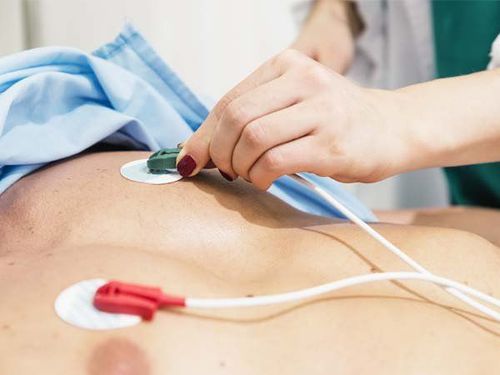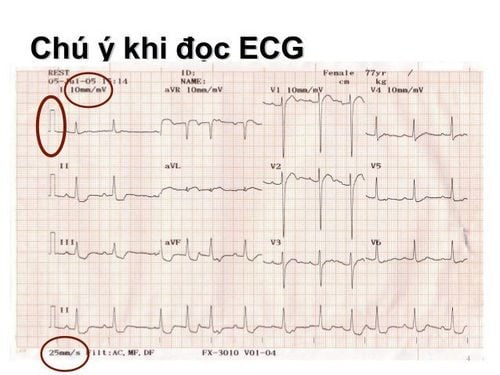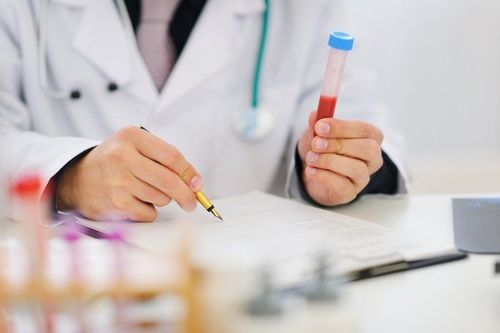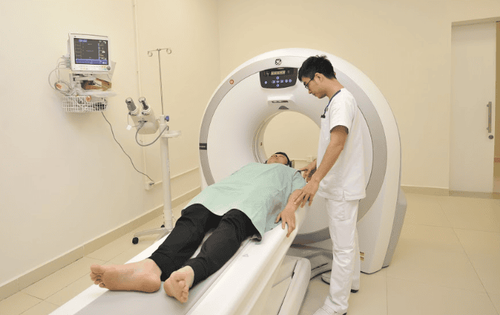This is an automatically translated article.
The article is professionally consulted by Master, Doctor Cao Thanh Tam - Cardiologist - Cardiovascular Center - Vinmec Central Park International General Hospital.Electrocardiogram, which is a non-invasive, painless test, is one of the bases to help doctors diagnose abnormal heart problems. In medicine, the use of electrocardiogram helps to detect cardiovascular diseases such as arrhythmia, heart failure, myocardial infarction, diagnose some changes, general heart disorders.
1. What is an electrocardiogram?
Electrocardiogram, also known as electrocardiogram (ECG), is an image recording the electrical activity of the heart, the electrical impulses emitted by heart muscle cells are recorded as a graph through contact electrodes. received on the skin.2. In what cases is electrocardiogram indicated?

Trắc nghiệm: Bạn có hiểu đúng về huyết áp cao không?
Huyết áp cao còn được gọi là kẻ giết người thầm lặng vì bệnh thường không có triệu chứng. Thiếu hụt kiến thức về huyết áp cao có thể làm cho tình trạng bệnh trở nên trầm trọng hơn. Dưới đây là những câu hỏi trắc nghiệm vui giúp bạn hiểu đúng về bệnh cao huyết áp.3. How is the electrocardiogram measured?
The doctor will attach 10 electrodes with adhesive pads to the skin of the chest, arms and legs of the person being measured. Men with chest hair may need to shave (a little) to better connect the electrodes. During the measurement, the person being measured is lying on their back, the computer will create a graph on paper, draw electrical impulses moving through the heart, or check the heart during exercise (stress electrocardiogram).It may take about 10 minutes to attach the electrodes and complete the test but the actual graphing only takes a few seconds. Besides the standard ECG, the doctor may perform other types for diagnostic purposes such as: portable electrocardiogram (checking the electrical activity of the heart for 1-2 days, 24 hours/day) ).
After the electrocardiogram, the doctor will read the waveforms recorded during the test to detect if the pulses are normal. Patients are usually informed of results on the same day or at the next follow-up appointment. If the results show an abnormality in the heart, the patient may have to have other types of electrocardiogram or perform other diagnostic tests such as echocardiography...depending on the doctor's assessment.
The patient can resume normal activities after the electrocardiogram is performed. Electrocardiogram test results require a qualified physician to read and draw conclusions, so the physician's professional role in electrocardiography is very important.

Master - Doctor Cao Thanh Tam has many years of experience in the diagnosis and treatment of cardiovascular diseases; Performing transthoracic echocardiography in the field of internal medicine and interventional Cardiology; Perform other non-invasive functional investigations in the diagnosis and treatment of cardiovascular diseases. Currently working as a cardiologist at Vinmec Central Park International General Hospital since November 2015.
Please dial HOTLINE for more information or register for an appointment HERE. Download MyVinmec app to make appointments faster and to manage your bookings easily.














